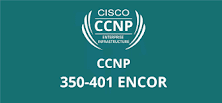Enterprise arquitecture
The Cisco Enterprise Architecture model separates the enterprise network into functional areas that are referred to as modules. The modularity that is built in to the architecture allows flexibility in network design and facilitates implementation and troubleshooting.
- Enterprise network design
- wireless lan design
- Software design WAN
- Software define access
- Quality of sertvicve
- Switching mechanism
The first section area is Architecture and is weighted at 15% of the overall exam. Topics in the Architecture area include:
1.1 Explain the different design principles used in an enterprise network
- 1.1.a Enterprise network design such as Tier 2, Tier 3, and Fabric Capacity planning
- 1.1.b High availability techniques such as redundancy, FHRP, and SSO
1.2 Analyze design principles of a WLAN deployment
- 1.2.a Wireless deployment models (centralized, distributed, controller-less, controller based, cloud, remote branch)
- 1.2.b Location services in a WLAN design
1.3 Differentiate between on-premises and cloud infrastructure deployments
1.4 Explain the working principles of the Cisco SD-WAN solution
- 1.4.a SD-WAN control and data planes elements
- 1.4.b Traditional WAN and SD-WAN solutions
1.5 Explain the working principles of the Cisco SD-Access solution
- 1.5.a SD-Access control and data planes elements
- 1.5.b Traditional campus interoperating with SD-Access
1.6 Describe concepts of wired and wireless QoS
- 1.6.a QoS components
- 1.6.b QoS policy
1.7 Differentiate hardware and software switching mechanisms
- 1.7.a Process and CEF
- 1.7.b MAC address table and TCAM
- 1.7.c FIB vs. RIB
Well, what does all this mean exactly? I’m here to help break down the blueprint so you can focus in your studies.
The ENCOR exam includes some design aspects. This includes the 3-teir traditional network design, include core, distribution, and access layers, as well as the 2-teir design also known as the collapsed core. In collapsed core, the core and distribution layers are condensed down into a single layer. What you don’t have to worry about on the ENCOR is spine and leaf. This is traditional a data center design and therefore is reserved for the Data Center Core exam.
If you’re coming to the CCNP Enterprise from the old 200-125 exam days then you’ll recognize the next section which includes FHRP, or First Hop Redundancy Protocol. These protocols are in place to protect, generally, the default gateway for a LAN. All the major ones are on the table here, including Cisco’s own GLBP and HSRP, as well as the more open VRRP.
The next exam section focuses on Wireless. Here you should become familiar with many different aspects of wireless technology, including frequency assignments, channels, different styles of antennas and their associated radiation patterns. You’ll also need to understand the common sources of interference to both 2.4GHz and 5GHz wireless signals.
With the cloud being a major focus in today’s enterprise it is important for CCNP/CCIE certification candidates to understand the major role it plays, as well as the benefits and drawbacks of cloud infrastructure. While cloud scales easily, generally speaking it is a one-size-fits-most solution. For more specific workloads, on-premises may be more desirable. On-premises can also offer lower latency connectivity to the environment.
SD-WAN
The next section has to be one of my personal favorites – SD-WAN or software-defined networking in a wide area network. For the ENCOR exam, you need to have a healthy understanding of Cisco’s SD-WAN offering by Viptela. Cisco Meraki, while an SD-WAN Cisco solution, is not covered on the ENCOR exam. You should understand the different components of the Cisco SD-WAN solution and the important roles that they play.
QoS
QoS, or Quality of Service, is an important part to many enterprise networks, probably more so today than they’ve ever been with all the collaborative technologies in use. Ensuring that latency sensitive traffic, like Cisco Webex and IP Telephone, gets priority on the network allows for a great meeting experience. Having a thorough understanding of QoS topics and technologies available at both L2 and L3 will make you successful here.
The last part of the ENCOR exam’s Architecture section requires you to understand CEF, or Cisco Express Forwarding, the MAC Address Table as well as TCAM and its uses, and the relationship and differences between the RIB and the FIB.
In other words Enterprise Architecture
- Explain the different design principles used in an enterprise network
- Analyze design principles of a WLAN deployment
- Differentiate between on-premises and cloud infrastructure deployments
- Explain the working principles of the Cisco SD-WAN solution
- Explain the working principles of the Cisco SD-Access solution
- Describe concepts of wired and wireless QoS
- Differentiate hardware and software switching mechanisms
 Reviewed by ohhhvictor
on
August 06, 2022
Rating:
Reviewed by ohhhvictor
on
August 06, 2022
Rating:

















No comments: